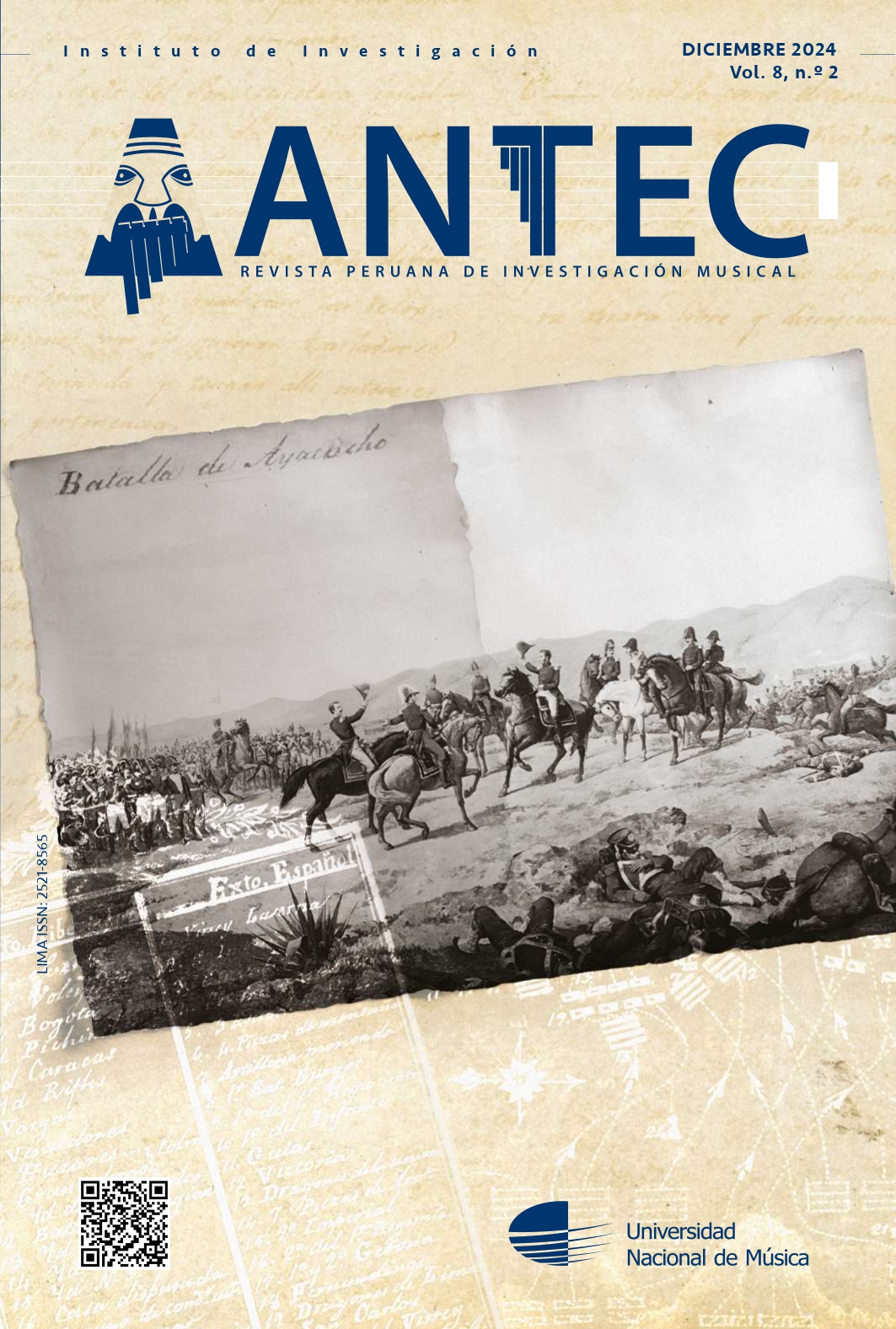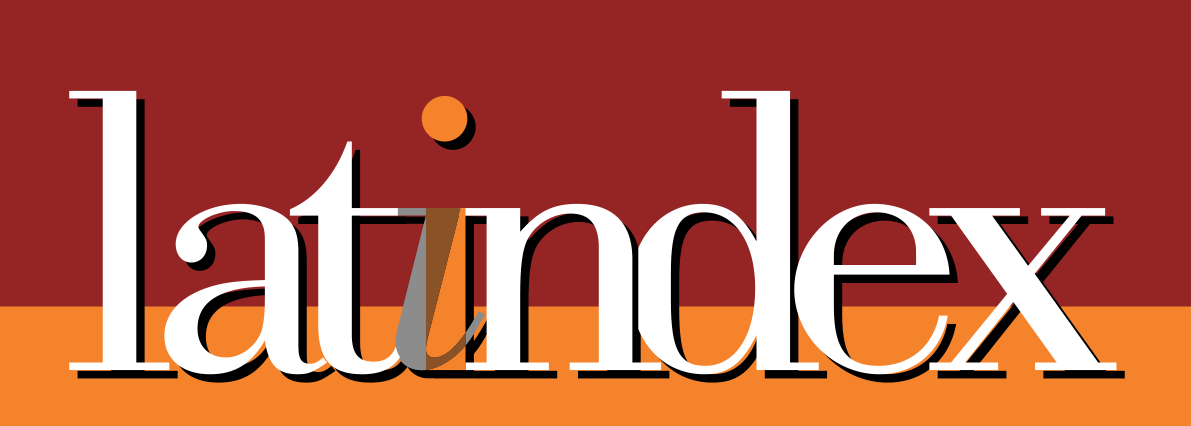Soundscape: creative interdiscipline and technology applied to bird song register
DOI:
https://doi.org/10.62230/antec.v8i2.250Keywords:
Soundscape, Ecoacustic, Interdisciplinary, Creative sound, Ornitology, Musique concrèteAbstract
This article introduces soundscape as an interdisciplinary tool directly linked to the use of different technology that reveals the interaction of humans with the acoustic environment. The work focuses on different technologies that expand the development and study of the soundscape, presenting different considerations as the recording’s chosen location and the technology used, which not only configures the acoustic composition of the elements that integrate it, but also their potential scientific application. Taking into account the context of technological progress has allowed to obtain better recording strategies, as well as contrasting examples, which allow us to expand our study in bird calls’ cataloging and analysis. Different problems were considered during the realization of the soundscape like background noise, microphone position, algorithmic recognition, among others, which hinder the algorithmic recognition of the bird calls found in soundscapes, resulting in works that use different and contrasting technologies enabling both artistic and scientific creations.
Downloads
References
Acevedo, M., y Villanueva-Rivera, L. (2006). Using automated digital recording systems as effective tools for the monitoring of birds and amphibians, Wildlife Society Bulletin, 34(1), 211–214. https://doi.org/10.2193/0091-7648(2006)34[211:UADRSA]2.0.CO;2
Akiyama, M. (2010). Transparent Listening: Soundscape Composition’s Objects of Study. RACAR: Revue d’art Canadienne/ Canadian Art Review, 35(1), 54-62. https://doi.org/10.7202/1066802ar
Bardeli, R., Wolff, D., Kurth, F., Koch, M., Tauchtert K. H., & Frommolt, K. H. (2010). Detecting bird sounds in a complex acoustic environment and application to bioacoustic monitoring. Pattern Recognition Letters, 31(12), 1524–1534. https://doi.org/10.1016/j.patrec.2009.09.014
Boddy, L., Morris, C., Wilkins, M., Tarran, G., y Burkill, P. (1994). Neural network analysis of flow cytometric data for marine phytoplankton species. Cytometry, 15(4), 283–93. https://doi.org/10.1002/cyto.990150403
Celis-Murillo, A., Deppe, J. & Allen, M. (2009). Using Soundscape Recordings to Estimate Bird Species Abundance, Richness, and Composition. Journal of Field Ornithology, 80(1), 64-78. https://doi.org/10.1111/j.1557-9263.2009.00206.x
Charif, R.A., Waack, A.M. & Strickman, L. (2010). Raven Pro 1.4 User’s Manual. Cornell Lab of Ornithology.
Dunn, D. & Lampert, M. (1989). Environment, Consciousness, and Magic: An Interview with David Dunn. Perspectives of New Music, 27(1), 94-105. https://doi.org/10.2307/833258
Dunn, D. & Van Peer, R. (1999). Music, Language and Environment. Leonardo Music Journal, 9, 63-67. https://doi.org/10.1162/096112199750316820
Dutt, A. (2021, 4 de julio). Bird Song Classification using Siamese Networks and Dilated Convolutions. Medium. https://towardsdatascience.com/bird-song-classification-using-siamese-networks-and-dilated-convolutions-3b38a115bc1
Farina, A., Gage, S. H., & Salutari, P. (2018). Testing the ecoacoustics event detection and identification (EEDI) approach on Mediterranean soundscapes. Ecological Indicators, 85, 698–715. https://doi.org/10.1016/j.ecolind.2017.10.073
Fagerlund, S. (2007). Bird Species Recognition Using Support Vector Machines. EURASIP Journal on Advances in Signal Processing, 2007, 1-8 ?? https://doi.org/10.1155/2007/38637
Frommolt, K.-H. (2017). Information obtained from long-term acoustic recordings: applying bioacoustic techniques for monitoring wetland birds during breeding season. Journal of Ornithology, 158(3), 659-668. https://doi.org/10.1007/s10336-016-1426-3
Frommolt, K.-H., & Tauchert, K.-H. (2014). Applying bioacoustic methods for long-term monitoring of a nocturnal wetland bird. Ecological Informatics, 21, 4–12. https://doi.org/10.1016/j.ecoinf.2013.12.009
Garcia Castilla, J. D. (2017). “Musicologia musical”: la musica y el sonido como medios de investigación crítica. El oído Pensante, 5 (1), 5-30. http://revistascientificas.filo.uba.ar/index.php/oidopensante/article/view/7498
Hedley, R.W., Huang, Y., Yao., K. (2017). Direction-of-arrival estimation of animal vocalizations for monitoring animal behavior and improving estimates of abundance. Avian Conservation & Ecology, 12(1), 1524–1534. https://doi.org/10.5751/ACE-00963-120106
Hold, T. (1971). Messiaen’s Birds. Music and Letters, 52(2), 113–122. https://doi.org/10.1093/ml/LII.2.113
Krause, B. (2002). The Loss of Natural Soundscapes. Earth Island Journal, 17(1), 27-29. http://www.jstor.org/stable/43879008
Krause, B. (2013, junio). The voice of the natural world [Transcripción]. TED. https://www.ted.com/talks/bernie_krause_the_voice_of_the_natural_world/transcript?subtitle=en&lng=es&geo=es
Liu, K. & Xie, B. (2021, 22-24 de octubre). A Timbre Equalization Scheme for Spatial Ambisonics Reproduction [Ponencia]. En B. Li y T. Li (Directores), 2021 IEEE 6th International Conference on Signal and Image Processing (ICSIP), Nanjing, China. https://doi.org/10.1109/ICSIP52628.2021.9689017
Malham, D. G., & Myatt, A. (1995). 3-D Sound Spatialization using Ambisonic Techniques. Computer Music Journal, 19(4), 58–70. https://doi.org/10.2307/3680991
Mennill, D. J., Battiston, M., Wilson, D. R., Doucet, S. M., & Foote, J. R. (2012). Field test of an affordable, portable, wireless microphone array for spatial monitoring of animal ecology and behaviour. Methods in Ecology and Evolution, 3(4), 704-712. https://doi.org/10.1111/j.2041-210X.2012.00209.x
Nieto-Mora, D.A., Ferreira de Oliveira, M.C., Sánchez-Giraldo, C., Duque-Muñoz, L., Isaza-Narváez, C. y Martínez-Vargas, J.D. (2024). Soundscape Characterization Using Autoencoders and Unsupervised Learning. Sensors (Basel Switzerland), 24, 1-21. https://doi.org/10.3390/s24082597
Oliveros, P. (2007). My “American Music”: Soundscape, Politics, Technology, Community. American Music, 25(4), 389-404. https://doi.org/10.2307/40071676
Porteous, J. D. & Mastin, J. F. (1985). Soundscape. Journal of Architectural and Planning Research, 2(3), 169-186.
Priyadarshani, N., Marsland, S. & Castro, I. (2018). Automated birdsong recognition in complex acoustic environments: a review. Journal of Avian Biology, 49(5). https://doi.org/10.1111/jav.01447
Rempel, R. S., Hobson, K. A., Holborn, G., Elliott, J. & Van Wilgenburg, S. L. (2005). Bioacoustic monitoring of forest songbirds: interpreter variability and effects of configuration and digital processing methods in the laboratory. Journal of Field Ornithology, 76(1), 1–11.https://doi.org/10.1648/0273-8570-76.1.1
Schafer, R. M. (1977). The Soundscape: Our Sonic Environment and the Tuning of the World. Destiny Books.
Simmonds, J.E., Armstrong, F., & Copland, P. J. (1996). Species identification using wideband backscatter with neural network and discriminant analysis. ICES Journal of Marine Science, 53(2), 189–195. https://doi.org/10.1006/jmsc.1996.0021
Stepanian, P. M., Wainwright, C. E., Chilson, P. B., Horton, K. G., Hille, D. C., & Kelly, J. F. (2016). Extending bioacoustic monitoring of birds aloft through flight call localization with a three-dimensional microphone array. Ecology and Evolution, 6(19), 7039-7046. https://doi.org/10.1002/ece3.2447
Truax, B. (2008). Soundscape Composition as Global Music: Electroacoustic music as soundscape. Organised Sound, 13(2), 103-109. https://doi.org/10.1017/S1355771808000149
Westerkamp, H. (2002). Linking soundscape composition1 and acoustic ecology. Organised Sound, 7(1), 51-56. https://doi.org./10.1017/S1355771802001085
Downloads
Published
Issue
Section
License
Copyright (c) 2024 Antec: Revista Peruana de Investigación Musical

This work is licensed under a Creative Commons Attribution-NonCommercial-NoDerivatives 4.0 International License.













